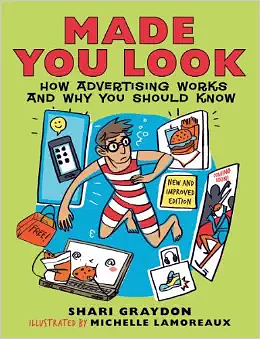USING TECHNOLOGY TO BOOST KINDNESS
Children spend more time with digital media — an average of 53 hours per week — than any other single pursuit, including sleep. Researchers are concerned that this technology overload may be interfering with the development of compassion and kindness.
Sara Konrath, whose 2010 study suggested a recent and dramatic decline in empathy among college students, points to video games, social media and reality TV as culprits. Others worry about the exposure to violence, and about virtual connections replacing face-to-face friendships, which can weaken social skills. Spending time on "screens" is inevitable in modern life, but parents can help turn that time into a healthy pursuit. This month we offer ideas for using technology to enhance, rather than diminish, the growth of kindness.
-Jenny Friedman, Executive Director
DIGITAL GRATITUDE
Make a Difference.....
Since chances are great that your family is wired to the outside world, use your devices as tools to nurture compassion and gratitude in your kids.
Seek out online games, apps and videos that promote kindness. Check out our 5 favorite digital resources. Also consider the recommendations by Common Sense Media, arranged by age.
Use technology to practice kindness. If your children are plugged in anyway, encourage them to email thank-you notes; call, text or email someone they love; create positive posts on social media; add to an online family gratitude journal; or create and share a video promoting a cause they care about.
Use technology with your child. Many of us use screens as babysitters - at least once in a while. After all, everyone needs to take a shower or finish some chores. But make an effort to watch videos and TV and play online games together as often as possible. Have conversations about the value and impact of what you're seeing.
Do some filming yourself. If possible, create media with your kids. Many experts believe that putting together a "news" video, for example, can help children become better consumers of media because they will see the issues journalists or social advocates grapple with.
Teach technology "manners" to your kids. We've all been frustrated by people talking on cell phones during dinner or a movie, blocking our view by taking videos ofa school concert, or texting while driving. Manners involve life-long education, but you can start early by pointing out how such rude (or dangerous) behavior impacts other people - and modeling positive behaviors yourself. When your children get old enough to have social media accounts, monitor their postings, and provide continual reminders to never use the digital world for unkindnesses and cheap shots.
Don't allow technology to prevent your family from having experiences that promote social-emotional learning. Time spent using smart phones, watching TV, playing video games or surfing the Internet can prevent families from taking part in health-promoting activities, like being in nature, getting involved in the community, reading together and having socializing with friends. Consciously arrange time away from your devices to enjoy these activities, all of which build compassion and connection.
BOOSTING MORAL COURAGE
Talk About It.....
Despite their incredibly heavy use of media, children spend little time analyzing the content. Have conversations with your children (but don't give a lecture!) about how media can influence them and how to make good choices. And use the media you watch together to spark kindness conversations.
The average American child sees almost 25,000 commercials a year on TV alone. The Internet is full of ads, too. Talk about the purpose behind advertising and remind children that what they see and hear is by nature self-serving and not necessarily true.
Discuss the characters in movies and TV shows: what motivates their choices and how they might have behaved differently.
As your children get older, help them recognize bias in news shows and chat about how to separate factual content from subjective commentary.
Ask what websites your children visit and why they enjoy them. Spend time exploring those sites yourself. Discuss any concerns with your child. Made You Look
Work together to develop family rules and guidelines around the safe use of all types of media.
Learn About It.....
Made You Look: How Advertising Works and Why You Should Know by Shari Graydon (ages 10+). This fun, lively guide helps children and adults learn about the tactics used by advertisers to influence our choices - all our lives!
INSPIRATION
"Technology gives us power, but it does not and cannot tell us how to use that power. Thanks to technology, we can instantly communicate across the world, but it still doesn't help us know what to say."
— Jonathan Sacks, rabbi, philosopher and Judaic scholar




